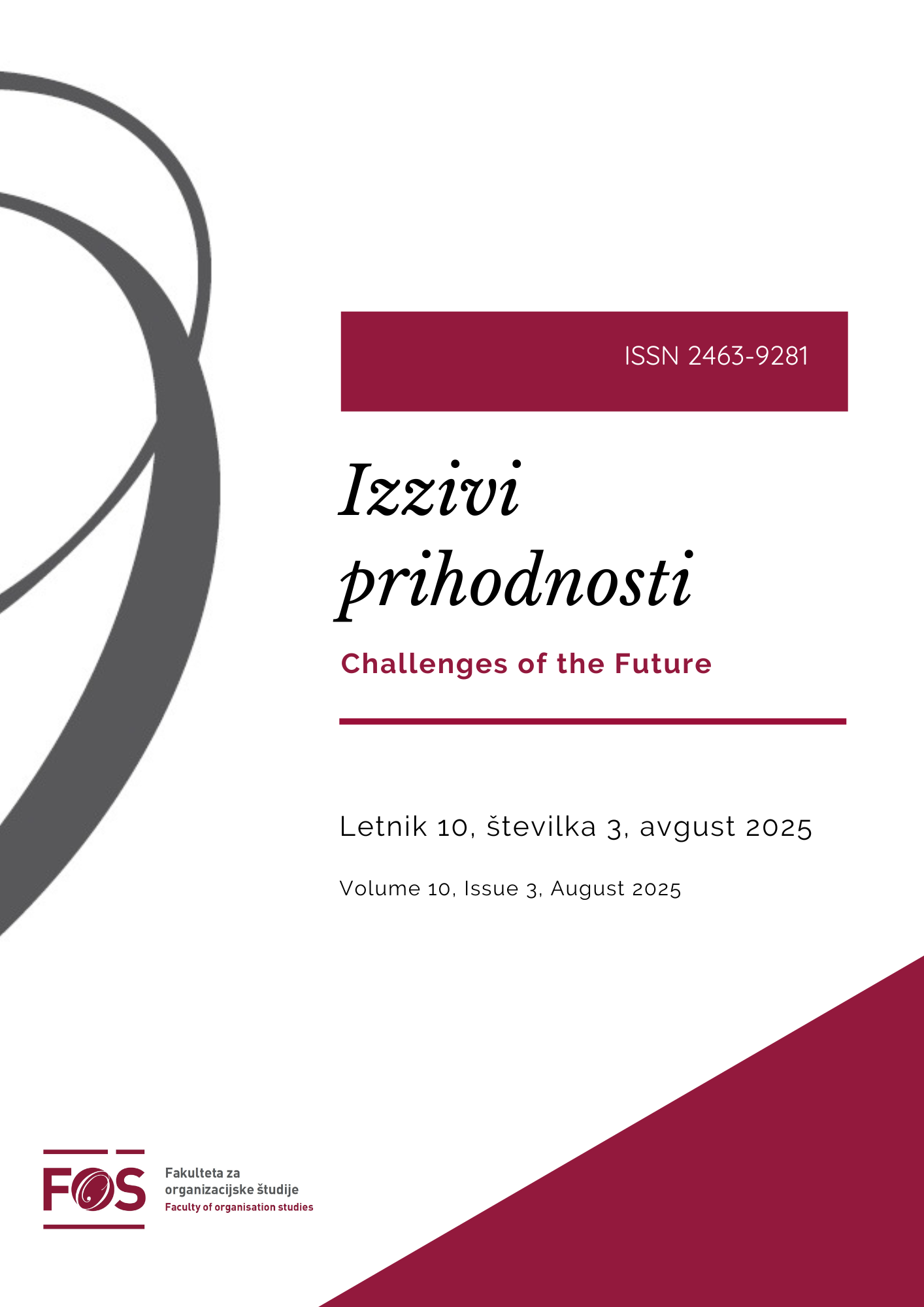Men’s and Women’s Perspectives in Reproductive Health Care
DOI:
https://doi.org/10.37886/ip.2025.006Keywords:
reproductive health, sexuality, society, taboosAbstract
Research Questions (RQ): What factors do men and women think influence the quality of their reproductive health? What differences exist between men and women in their perception of their own reproductive health? How do stigmas and taboos affect reproductive health?
Purpose: The purpose of this research was to examine the perspectives of men and women in the process of reproductive health care.
Method: Qualitative method was used. Data was collected from a purposive sample through semi-structured interviews conducted in four focus groups. The data was analyzed using content analysis.
Results: Results: three themes were identified through the qualitative analysis method: (1) reproductive health of men and women, (2) socio-cultural aspects of reproductive health, and (3) challenges of reproductive health. At the same time, 13 sub-themes were identified. The study showed that primary socialization has a significant impact on an individual's attitudes towards reproductive health in adulthood. It was found that women are more concerned about reproductive health than men. It was also found that stigmas and taboos, which prevent open discussion about reproductive health, have a major impact on the quality of reproductive health. This leads to lack of information, fear, discrimination and inequalities in access to health services.
Organization: The research highlights the need for more education and emphasis on preventive care and reducing social exclusion and stigma related to reproductive health.
Society: The results of the research contribute to a better understanding of men's and women's perceptions of reproductive health and how they think it is influenced by society. In this context, it also provides a better understanding of how stigmas and taboos affect reproductive health and how to seek help when reproductive health problems arise.
Originality: The research provides insights into the specific nature of men's and women's reproductive health and how society views it. The originality of the research is that it offers a broad insight into how men and women understand reproductive health. It also provides an outline of the current state of reproductive health in society.
Limitations/Future Research: The answers obtained from the interviewees are subjective in nature and are subject to interpretation by the researchers. It would be useful to conduct quantitative type of studies in the future. Also, one of the limitations is related to the research sample, which includes a set of interviewees from two Slovenian regions. In the future, it would be necessary to include interviewees from the whole of Slovenia so that the results can be generalized to the whole population.
References
Adams, Y. J., Stommel, M., Ayoola, A., Horodynski, M., Malata, A., & Smith, B. (2018).Husbands’ knowledge and attendance at wives’ postpartum care among rural farmers. Health Care for Women International, 39(9), 1020–1037. https://doi.org/10.1080/07399332.2018.1491976
Adane, H. A., Assefa, N., Mengistie, B., & Demis, A. (2020). Male involvement in prevention of mother to child transmission of human immunodeficiency virus and associated factors in Enebsiesarmider District, north West Ethiopia, 2018: A cross-sectional study. BMC Pregnancy and Childbirth, 20(1), 144. https://doi.org/10.1186/s12884-020-2837-y
Addo, M., & Eboh, W. O. (2014). Qualitative and Quantitative Research Methods (1st edition). Sage Publications.
Anderson, R., Panchaud, C., Singh, S., & Watson, K. (2014). Demystifying Data: A Guide to Using Evidence to Improve Young People’s Sexual Health and Rights. https://www.guttmacher.org/report/demystifying-data-guide-using-evidence-improve-young-peoples-sexual-health-and-rights
Ani, F., Abiodun, O., Sotunsa, J., Faturoti, O., Imaralu, J., & Olaleye, A. (2016). Demographic factors related to male involvement in reproductive health care services in Nigeria. The European Journal of Contraception & Reproductive Health Care: The Official Journal of the European Society of Contraception, 21(1), 57–67. https://doi.org/10.3109/13625187.2015.1036856
Atuahene, M. D., Arde-Acquah, S., Atuahene, N. F., Adjuik, M., & Ganle, J. K. (2017). Inclusion of men in maternal and safe motherhood services in inner-city communities in Ghana: Evidence from a descriptive cross-sectional survey. BMC Pregnancy and Childbirth, 17(1), 419. https://doi.org/10.1186/s12884-017-1590-3
Badrun, A., Nabila, R. P., & Hermayanti, D. (2024). The Impact of Social Media on Reproductive Health Knowledge Among Gen Z. Journal of Global Research in Public Health, 9(2), 135–140. https://doi.org/10.30994/jgrph.v9i2.544
Başar, F., Yavuz, Y., & Yeşildere Sağlam, H. (2021). Evaluation of the Effectiveness of Reproductive Health Education Program Given to Adolescents. https://doi.org/10.4274/jpr.galenos.2021.99266
Basnet, H. (2018). FOCUS GROUP DISCUSSION: A TOOL FOR QUALITATIVE INQUIRY. Researcher: A Research Journal of Culture and Society, 3, 81. https://doi.org/10.3126/researcher.v3i3.21553
Benyamini, Y., & Todorova, I. (2017). Women’s Reproductive Health in Sociocultural Context. International Journal of Behavioral Medicine, 24(6), 799–802. https://doi.org/10.1007/s12529-017-9695-7
De Jonge, C., & Barratt, C. l. R. (2019). The present crisis in male reproductive health: An urgent need for a political, social, and research roadmap. Andrology, 7(6), 762–768. https://doi.org/10.1111/andr.12673
Dong, Y., Zhang, L., Lam, C., & Huang, Z. (2024). Counteracting sexual and reproductive health misperceptions: Investigating the roles of stigma, misinformation exposure, and information overload. Patient Education and Counseling, 120, 108098. https://doi.org/10.1016/j.pec.2023.108098
Falade-Fatila, O., & Adebayo, A. M. (2020). Male partners’ involvement in pregnancy related care among married men in Ibadan, Nigeria. Reproductive Health, 17(1), 14. https://doi.org/10.1186/s12978-020-0850-2
General Data Protection Regulation. (2016). Regulation—2016/679. https://eur-lex.europa.eu/eli/reg/2016/679/oj/eng
Gibore, N. S., Ezekiel, M. J., Meremo, A., Munyogwa, M. J., & Kibusi, S. M. (2019). Determinants of Men’s Involvement in Maternity Care in Dodoma Region, Central Tanzania. Journal of Pregnancy, 2019, 7637124. https://doi.org/10.1155/2019/7637124
Hussein, J., & Ferguson, L. (2019). Eliminating stigma and discrimination in sexual and reproductive health care: A public health imperative. Sexual and Reproductive Health Matters, 27(3), 1–5. https://doi.org/10.1080/26410397.2019.1697103
Kabagenyi, A., Jennings, L., Reid, A., Nalwadda, G., Ntozi, J., & Atuyambe, L. (2014). Barriers to male involvement in contraceptive uptake and reproductive health services: A qualitative study of men and women’s perceptions in two rural districts in Uganda. Reproductive Health, 11(1), 21. https://doi.org/10.1186/1742-4755-11-21
Kiger, M. E., & Varpio, L. (2020). Thematic analysis of qualitative data: AMEE Guide No. 131. Medical Teacher, 42(8), 846–854. https://doi.org/10.1080/0142159X.2020.1755030
Kordeš, U., & Smerdu, M. (2015). Osnove kvalitativnega raziskovanja. Založba Univerze na Primorskem. http://www.hippocampus.si/ISBN/978-961-6963-98-5.pdf
Mohd Tohit, N. F., & Haque, M. (2024). Forbidden Conversations: A Comprehensive Exploration of Taboos in Sexual and Reproductive Health. Cureus, 16(8), e66723. https://doi.org/10.7759/cureus.66723
Narasimhan, M., Logie, C. H., Moody, K., Hopkins, J., Montoya, O., & Hardon, A. (2021). The role of self-care interventions on men’s health-seeking behaviours to advance their sexual and reproductive health and rights. Health Research Policy and Systems, 19, 23. https://doi.org/10.1186/s12961-020-00655-0
Nasreen, H. E., Leppard, M., Al Mamun, M., Billah, M., Mistry, S. K., Rahman, M., & Nicholls, P. (2012). Men’s knowledge and awareness of maternal, neonatal and child health care in rural Bangladesh: A comparative cross sectional study. Reproductive Health, 9(1), 18. https://doi.org/10.1186/1742-4755-9-18
Nik-Azin, A., Nainian, M. R., Zamani, M., Bavojdan, M. R., Bavojdan, M. R., & Motlagh, M. J. (2013). Evaluation of sexual function, quality of life, and mental and physical health in pregnant women. Journal of Family & Reproductive Health, 7(4), 171–176.
Noble, H., & Smith, J. (2015). Issues of validity and reliability in qualitative research. Evidence-Based Nursing, 18(2), 34–35. https://doi.org/10.1136/eb-2015-102054
Panagioti, M., Richardson, G., Small, N., Murray, E., Rogers, A., Kennedy, A., Newman, S., & Bower, P. (2014). Self-management support interventions to reduce health care utilisation without compromising outcomes: A systematic review and meta-analysis. BMC Health Services Research, 14, 356. https://doi.org/10.1186/1472-6963-14-356
Pourkazemi, R., Janighorban, M., Boroumandfar, Z., & Mostafavi, F. (2020). A comprehensive reproductive health program for vulnerable adolescent girls. Reproductive Health, 17(1), 13. https://doi.org/10.1186/s12978-020-0866-7
Rao, T. S. S., Gopalakrishnan, R., Kuruvilla, A., & Jacob, K. S. (2012). Social determinants of sexual health. Indian Journal of Psychiatry, 54(2), 105–107. https://doi.org/10.4103/0019-5545.99527
Rao, T. S. S., Tripathi, A., Manohar, S., & Tandon, A. (2024). Promoting sexual well-being. Indian Journal of Psychiatry, 66(Suppl 2), S262–S271. https://doi.org/10.4103/indianjpsychiatry.indianjpsychiatry_612_23
Remme, M., Narasimhan, M., Wilson, D., Ali, M., Vijayasingham, L., Ghani, F., & Allotey, P. (2019). Self care interventions for sexual and reproductive health and rights: Costs, benefits, and financing. BMJ, 365, l1228. https://doi.org/10.1136/bmj.l1228
Rivenes Lafontan, S., Jones, F., & Lama, N. (2024). Exploring comprehensive sexuality education experiences and barriers among students, teachers and principals in Nepal: A qualitative study. Reproductive Health, 21(1), 131. https://doi.org/10.1186/s12978-024-01876-0
Robinson, R. S. (2014). Purposive Sampling. V A. C. Michalos (Ur.), Encyclopedia of Quality of Life and Well-Being Research (str. 5243–5245). Springer Netherlands. https://doi.org/10.1007/978-94-007-0753-5_2337
Schnitzler, L., Paulus, A. T. G., Roberts, T. E., Evers, S. M. A. A., & Jackson, L. J. (2023). Exploring the wider societal impacts of sexual health issues and interventions to build a framework for research and policy: A qualitative study based on in-depth semi-structured interviews with experts in OECD member countries. BMJ Open, 13(1), e066663. https://doi.org/10.1136/bmjopen-2022-066663
Shand, T., & Marcell, A. V. (2021). Engaging Men in Sexual and Reproductive Health. V Oxford Research Encyclopedia of Global Public Health. https://doi.org/10.1093/acrefore/9780190632366.013.215
Sharma, R., Biedenharn, K. R., Fedor, J. M., & Agarwal, A. (2013). Lifestyle factors and reproductive health: Taking control of your fertility. Reproductive Biology and Endocrinology : RB&E, 11, 66. https://doi.org/10.1186/1477-7827-11-66
Starrs, A. M., Ezeh, A. C., Barker, G., Basu, A., Bertrand, J. T., Blum, R., Coll-Seck, A. M., Grover, A., Laski, L., Roa, M., Sathar, Z. A., Say, L., Serour, G. I., Singh, S., Stenberg, K., Temmerman, M., Biddlecom, A., Popinchalk, A., Summers, C., & Ashford, L. S. (2018). Accelerate progress—sexual and reproductive health and rights for all: Report of the Guttmacher–Lancet Commission. The Lancet, 391(10140), 2642–2692. https://doi.org/10.1016/S0140-6736(18)30293-9
United Nations. (2015). Transforming our World: The 2030 Agenda for Sustainable Development. https://sustainabledevelopment.un.org/post2015/transformingourworld/publication
WHO. (2023). Reproductive health. Reproducitve Health. https://www.who.int/southeastasia/health-topics/reproductive-health
Yousaf, O., Grunfeld, E. A., & Hunter, M. S. (2015). A systematic review of the factors associated with delays in medical and psychological help-seeking among men. Health Psychology Review, 9(2), 264–276. https://doi.org/10.1080/17437199.2013.840954
Additional Files
Published
How to Cite
Issue
Section
License
Copyright (c) 2025 Anton Grmšek Svetlin, Nika Jerina, Melisa Smajlović, Mirko Prosen, Rebeka Lekše

This work is licensed under a Creative Commons Attribution-ShareAlike 4.0 International License.
![]()








